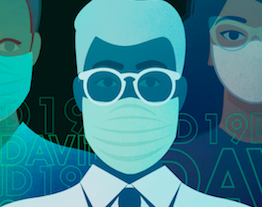A report by the Emergency Care Institute (ECRI) lists the ten most innovative emerging technologies in 2015. The document, entitled Top 10 Hospital C-Suite Watch List, says that these products will demand attention and planning over the next 18 months. The objective? To promote patient safety and improve the profitability of healthcare.
1. Disinfectant robots could be the solution to inter-hospital viruses and have already been tested at hospitals in the United States. The device uses ultraviolet light and hydrogen peroxide vapor to complement the mandatory protocols that have not yet been successful in combatting resistant organisms.
2. Three-dimensional printers are being developed with three objectives: to create anatomical models for specific patients to plan and practice delicate surgery before the actual procedure, to make personalized implants, and to create human organs and tissues by layering cells.
3. Middleware Software allows for communication and information sharing between different systems of medical alerts, facilitating automation of clinical documentation and its access by new mediums such as cell-phones and pagers.
4. The implementation of clinics after hospital discharges seeks to create a less aggressive transition between the hospital and the patient’s home, where medical monitoring can reduce the rate of avoidable relapses.
5. The creators of Google Glass are developing health-related applications specially designed for surgeons. These will allow professionals to access clinical information hands-free during a surgical procedure and even carry out remote consults with other specialists – who will receive the images that the doctor sees in real time via the glasses.
6. Aimed at patients who present contraindications to bariatric surgery or who do not want to take the associated risks, anti-obesity devices work without permanently altering the gastro-intestinal tract. Three models are in the development stage: the Maestro System for VBLOC implant, which would block the Vagus nerve; ReShape Duo balloons, two spheres located in the stomach to limit its capacity; and the EndoBarrier ‘hose’; sixty centimeters of impenetrable fluoro-polymer placed inside the small intestine to partially block the absorption of nutrients.
7. The creation of an Oncological Center for Adolescents encourages more personalized care for patients between 15 and 24 years old.
8. Fecal microbial transplants seek to reestablish normal microbial diversity in the colon, a treatment for clostridium difficile bacteria, transferring fecal material from a healthy patient to a sick one.
9. Aimed at patients with type 1 diabetes, the artificial pancreas would be capable of reestablishing metabolic homeostasis before hypoglycemia occurs. The system would automatically pump insulin once the glucose sensor reaches a predetermined value and the patient doesn’t respond to an alert.
10. The development of smaller and smaller portable sensors to permit healthy and sick patients to monitor their vital signs from home without any need to be admitted to the hospital. Taking the form of a wristwatch, patch or device that receives signals from the head, these products are designed for specific conditions such as diabetes or cardiovascular disease.
In addition, in a complementary report entitled Top 10 Patient Safety Concerns for Healthcare Organizations 2015, the ECRI listed ten major problems in the current healthcare system that put patient safety at risk:
1. Improper configuration of the alerts on medical information systems.
2. Data integrity: erroneous information or loss of electronic health records and personal electronic devices.
3. Poor management of patient violence.
4. Mixing-up of intravenous drips leading to flawed administration of medications and solutions.
5. Coordinated care events related to the composition of medications.
6. Failures in implementing dual controls independently.
7. Events related to the use of opioids.
8. Improper re-use of endoscopes and other surgical instruments.
9. Flawed transfers related to patient transport.
10. Medication errors related to confusion between pounds and kilograms.



